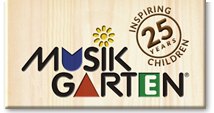Social Media platforms have transformed the way our world communicates. According to the Pew Research Center, nearly 70% of Americans have at least one social media profile. These platforms can be a highly effective means of reaching new music students and engaging them in a very meaningful way. And, when your followers engage with your form of social media, you have the opportunity to influence all of their connections as well. When considering if and which social media platforms to market your music studio, here are a few tips to keep in mind:
Social Media Tips for Music Teachers
- Understand your target market so that you select the social media platform that will reach the most of them with the least amount of effort. There are several social media platforms for families and mothers of young children such as Famster, Justmommies, Cafemom, and Disney Family Community, but keep in mind while these are highly targeted platforms, their population pales in comparison to the major platforms such as Facebook or Pinterest.
- Rather than participating in all of the different major social media platforms, think about doing just a few of them really well. Social media can take a large amount of time, so you will want to budget your time wisely so that you can concentrate on other aspects of your music studio marketing.
- Post often and with relevancy. If you do engage in social media for your studio, be prolific about posts, and make sure they will be interesting to your intended target audience of prospective young music students. Social Media authors can be very creative in what to post and how it links to their business or message. Don’t write all of your posts like an advertisement for childhood music program, so followers don’t get turned off.
- When the platform allows for it, use pictures along with words. Color catches the eye, and eyes on faces also grab attention. Just be sure that if you do post a picture of a young music student on social media, that you have signed permission from their parent(s). Also be sure that you do not provide the child’s name anywhere in the post.
- Use links to references within your posts to add more relevance. Search engines like for social media content to have supporting evidence in the form of online articles, blog posts, and other data sources. These can be easily found by searching for industry leaders in childhood music theory, and placed as a link within the content itself.
- Pay or not to pay. Often times you can build a group of followers from scratch with interesting, creative, and thoughtful social media posts. If this is the case, then you may not consider paying for ads or “boosts” in social media. However, these methods can be helpful to get a social media destination off the ground. Consider starting small and seeing what kind of results the buy gets you. Cost per new follower is a good way to gauge the effectiveness of an ad buy or boost.
There is a multitude social media resources for early childhood music teachers available online, if you do some digging. Start with a few platform(s) that best suit the target audience for your music studio, and learn as much as you can about effectively using those social media outlets.





